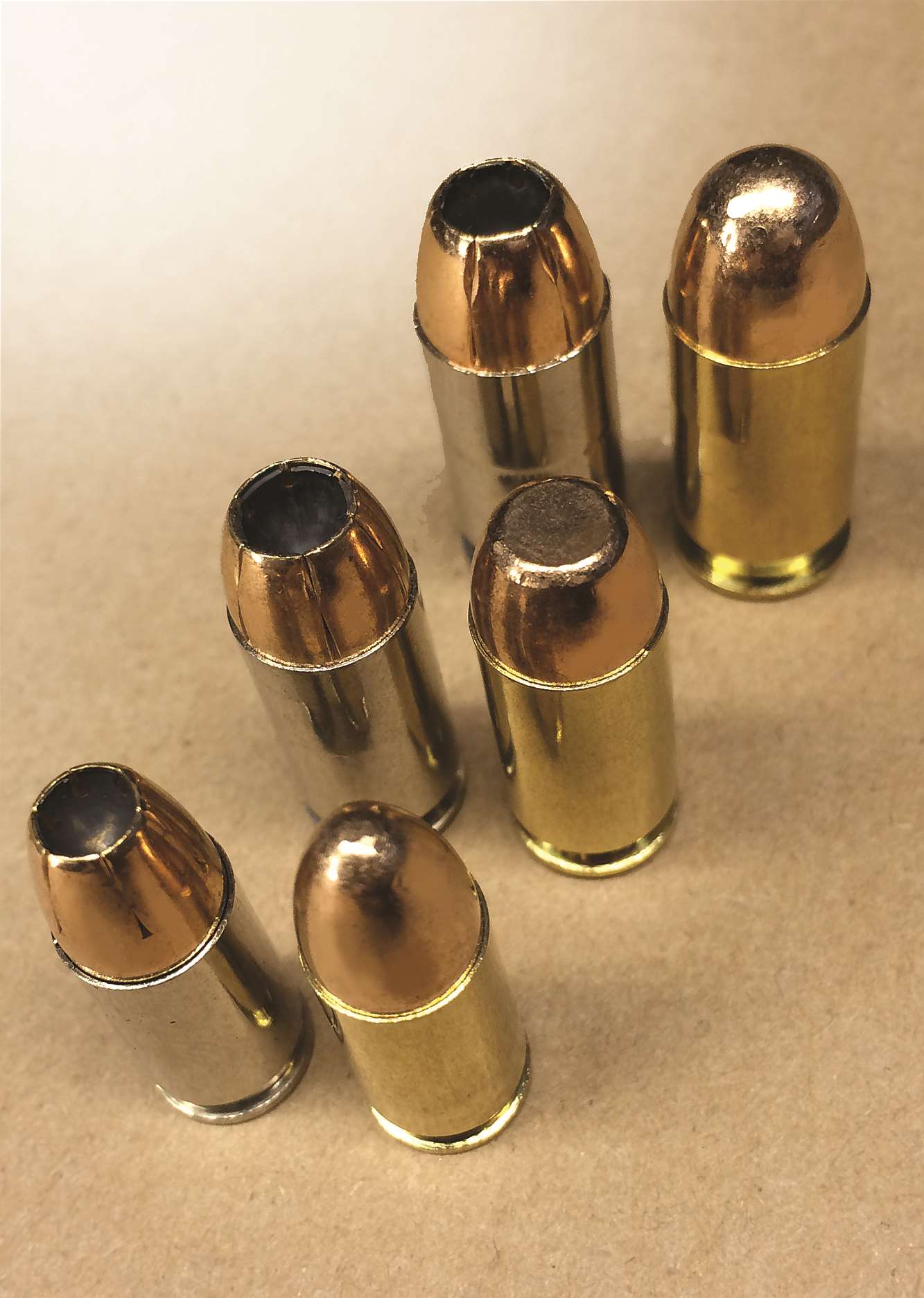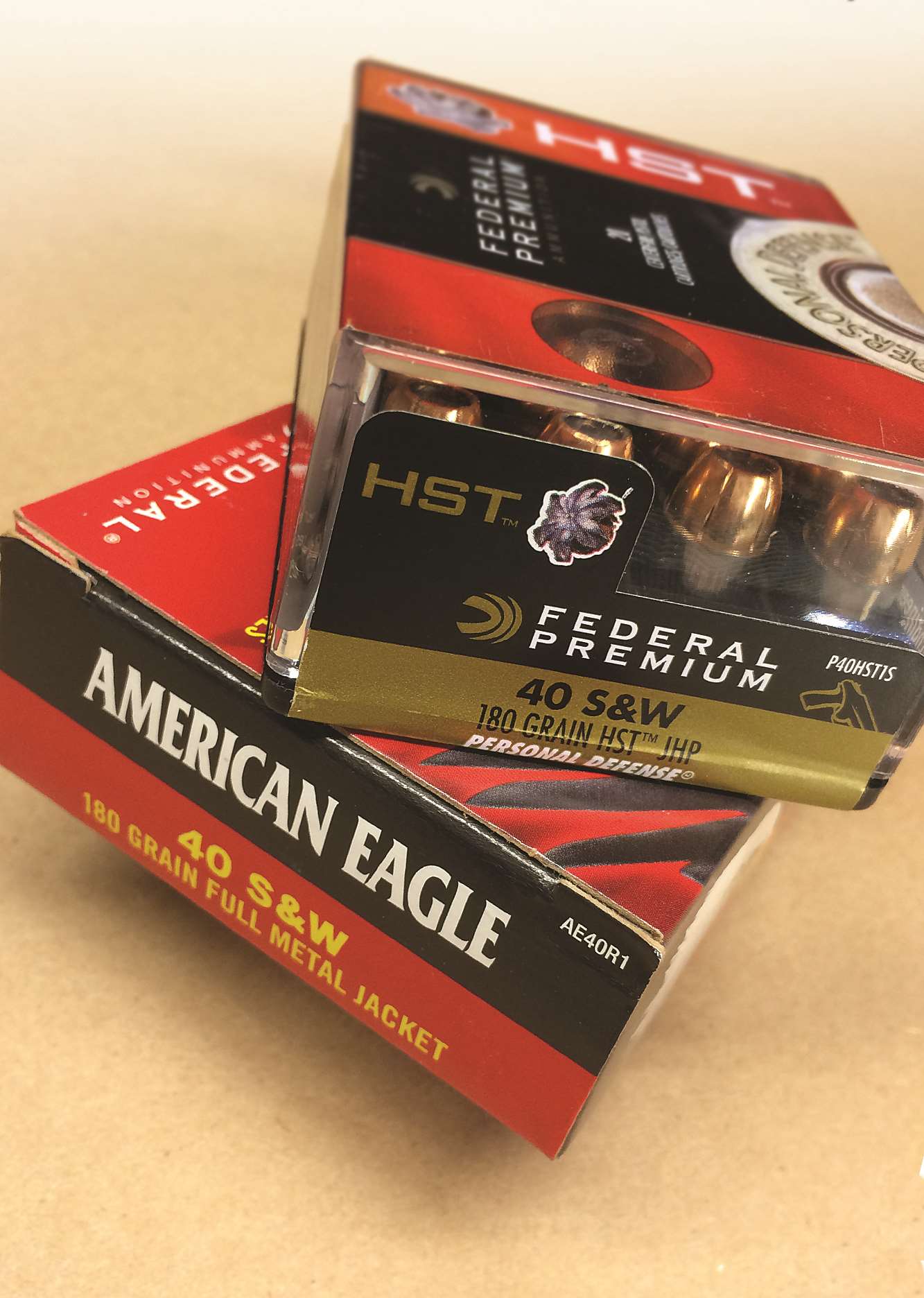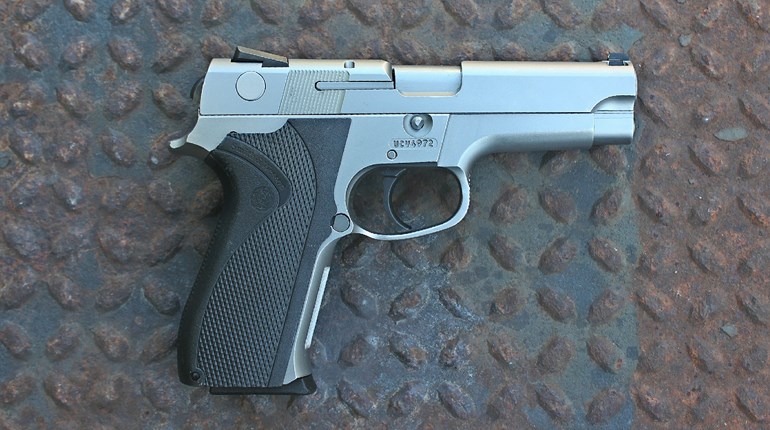
While law enforcement response time is a difficult thing to measure, there’s no question that in genuine emergencies, it’s always too long—often way too long—before the good guys and/or women in blue can arrive. It’s true we Americans benefit from the best law enforcement forces in the world, but the fact remains there are a lot of us, while they’re stretched pretty thin. Happily, however, violent crime has continued a nearly 25-year slide. Only in drug-slathered large cities—surely we need name no names—is this welcome trend (sadly) disappearing.

Somewhere in the gulf between these truths, many Americans have correctly concluded that they’re on their own when real trouble finds them. The next step for many is a defensive firearm and—we emphatically endorse—sound and continuing training in responsible use of that technology.
This is especially important with a handgun, as these skills are widely acknowledged as the most perishable. While almost any practice is better than none, defensive handgunning has an additional curve to throw: Ammunition performance varies widely, and this can have major impacts on how you and your handgun perform in extremis. Just because such a circumstance would be horribly unwelcome is no excuse for burning up whatever we can find and calling it “good,” even if we (incorrectly) assumed that all 9 mm, say, would function reliably in any 9 mm-chambered firearm.
We think ATK/Vista Outdoor has a particularly sound cure for these interrelated conundrums. The combination of their American Eagle training ammunition and Federal Premium HST defensive loadings in Practice and Defend Combo Packs puts the best of both worlds at your fingertips, er, firing pin—training and defensive ammo designed to function, and more importantly, “feel” the same in your firearm despite their very different roles and construction. In each of four calibers (.380 ACP, 9 mm, .40 S&W and .45 ACP), you’ll find 100 target/practice rounds packed with 20 premium defensive cartridges.This is especially important with a handgun, as these skills are widely acknowledged as the most perishable.
.45 ACP
The historical “big dog” of defensive cartridges was long a serious offender in terms of different feel and function between training/practice and defensive ammo. This was due in large part to two interrelated factors—bullet “architecture” and resulting powder selection.
Bullet architecture was an issue because reliably fight-ending power was not a trivial achievement with the historic “ball”-type projectile of .45 ACP. True, the 230-grain .45s were the best (and certainly superior to 115-grain 9 mm), but well less than perfect. The edge the .45 had came from its greater cross-section, and correspondingly better ability to deposit whatever ballistic energy it had in what it hit first. The velocity range in which this occurred, however, was an unreliable expander of early hollow-point projectiles in semi-automatic firearms.
The net result was by no means unfathomable: The Browning cartridge is superbly versatile, so a lighter bullet at higher velocity (to provide reliable hollow-point expansion) was the common fix. Unfortunately, these also implied a different charge weight of a different burn rate powder. As any handloader can tell you, either of these could change performance quite noticeably, to say nothing of the actual point of impact. Together, they were genuine trouble: Not only did the pistol run with different (and generally more abrupt) dynamics, but careful sight regulation to allow precision in high consequence shots was out the window for one cartridge type or the other.
This resulted in a non-trivial number of experts all but insisting that you had to train only with your defensive ammo in your defensive gun. As this was very nearly a “buck-a-stick” proposition in the old days—and even more expensive now—folks who were paying for their own ammo simply didn’t do it. Small wonder.
No more, we’d say, with the .45 ACP Practice and Defend Combo Pack. A very standard 230-grain round nose is wisely the practice projectile, while a smooth-feeding, roundish “HST” JHP stands in for defensive duty. Over the chrono, there was slightly more difference than we would have expected in velocity (an average of 48 ft./sec., though with impressively small total variations, and even smaller standard deviations in both), so we disassembled a sample of each. We discovered different charge weights of clearly different powders.

Such a difference may seem odd, but probably shouldn’t: Substantially divergent architectures dictate that the bullets almost certainly do not share ballistic coefficients nor optimum seating depths/combustion volumes. Their performance might quite necessarily be optimized—and more important, matched—by using different propellants.
Results clearly indicate Federal went to this sort of trouble, too. At defensive distances, hits were almost overlays of the training variety on the defensive. But what really impressed was the tiny difference in the power and “character,” if you will, despite the largest energy difference of our three calibers. We’d consider ourselves intentionally and particularly sensitive to these variations, and we could still tell the difference: It certainly didn’t feel like almost 11 percent.
At least in .45 ACP, we’d re-label all our concerns as antique. Bravo!
.40 S&W
Our tests were repeated with the 180-grain .40 S&W Combo. Here, another very typical projectile profile tops the practice round (a round-nosed flat-point), while a scored-jacket hollow-point comprises the defensive version.
Our chrono results may tell the tale with the greatest clarity: Only 20 ft./sec. separated the American Eagle training rounds from the HST defensives.Point of impact didn’t seem to overlay quite as well for the .40s (though by-type accuracy was the best of all in the .40 HSTs), but we simply couldn’t tell the rounds apart in terms of recoil, even when a willing pal stacked mixed magazines (“blind” to us). Deconstruction of a couple of rounds was also interesting here: Powder did look the same (though such visual identification is tricky and should never be used for conclusive powder ID or load development), and the charge weight was extremely close—arguably below our measurement threshold.
Our chrono results may tell the tale with the greatest clarity: Only 20 ft./sec. separated the American Eagle training rounds from the HST defensives. As energy, this was only a 16 ft.-lbs. difference, or less than 4 percent. It’s even easier to banish our training vs. defensive concerns here.
9 mm
The Combo pairing in 9 mm proved a quixotic duo. While performance was superb in terms of feeding, and five shots of each formed a single ragged hole well under an inch at defensive distances, the energy differences (slightly over 10 percent) were plainest. Like the .45 ACP, disassembly showed different propellants were driving the 115-grain projectiles. Noodle the math a little, and you may see why 9 mm and its lighter projectiles are the trickiest caliber to do this with.
One important note: We conducted most of our tests using full-sized handguns mainly because these are the easiest to shoot with precision. We did save what quantities we could to try in other firearms, and several of these were more truly “carry” sized. As barrel lengths fell and pistols grew lighter, we noticed more variations in both accuracy and felt recoil, though this is hardly a surprise. Don’t sigh in disillusionment, however: These combos are still a much better way to practice, and for all the same reasons, with any defensive firearm. Compared to just going “cheap” or “available” in your ammunition selection, they will make you a superior practitioner via the consistency they provide.Compared to just going “cheap” or “available” in your ammunition selection, they will make you a superior practitioner via the consistency they provide.
In the last analysis, we think the Combo packs are a significant advance. For shooters who don’t reload—and there’s absolutely nothing wrong with simply buying your ammo—they eliminate (or at least control) an important variable in developing sound technique. We validate this mainly by circling back to where we started: While you certainly hope never to fire a shot in anger, the possibility does exist. In that circumstance, you’ll want your training to have prepared you as fully as possible for the necessary precision.
We don’t know of any out-of-a-box solution that does so remotely as well as the Federal Premium/American Eagle Practice and Defend Combo Packs.
Visit Federal/American Eagle at FederalPremium.com.


































